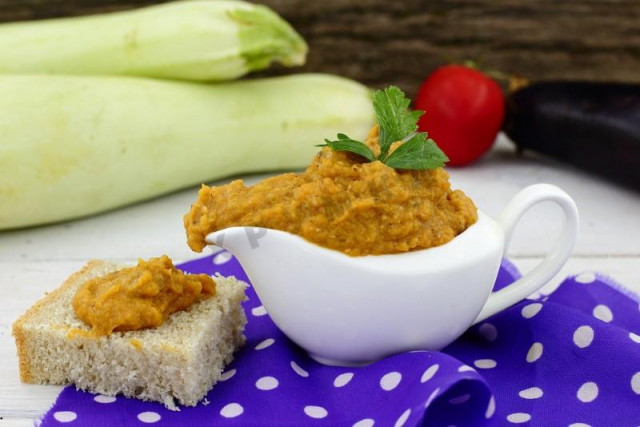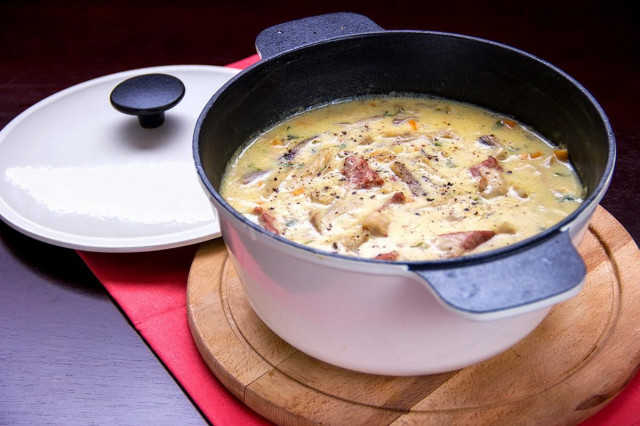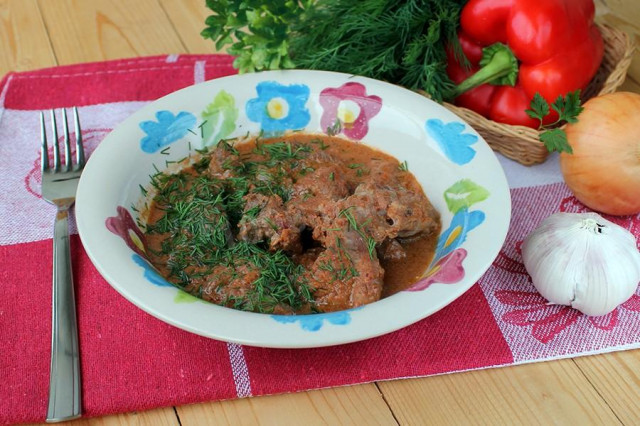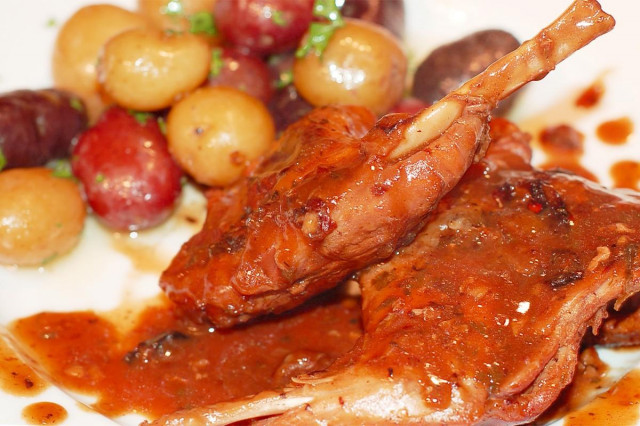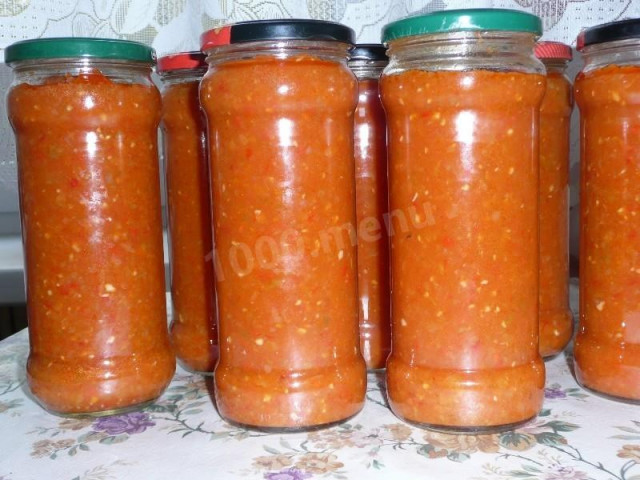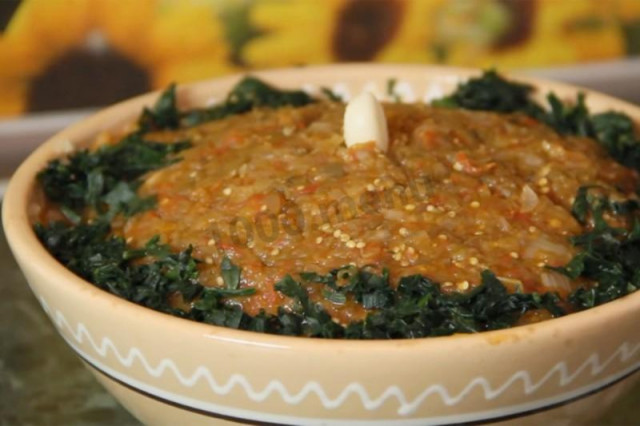Composition / ingredients
Step-by-step cooking
Step 1:
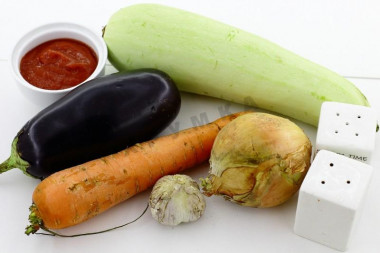
To prepare zucchini-eggplant caviar for the winter, take the following products: zucchini, eggplant, carrot, onion, garlic, tomato paste, sunflower oil, salt, ground black pepper, ground coriander, dried parsley.
Step 2:
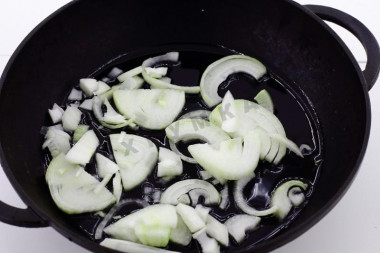
Heat the sunflower oil in a frying pan. Cut the onion into half rings. Fry over low heat until soft.
Step 3:
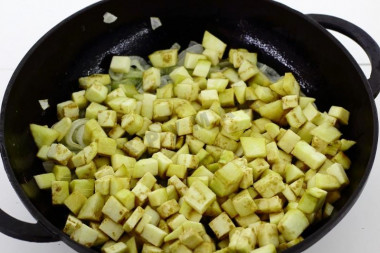
Wash the eggplants, peel them, cut them into cubes. Add to the fried onion.
Step 4:
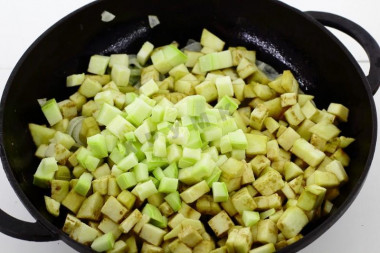
Add the diced zucchini. If the zucchini is not very young, first remove the seeds and peel.
Step 5:
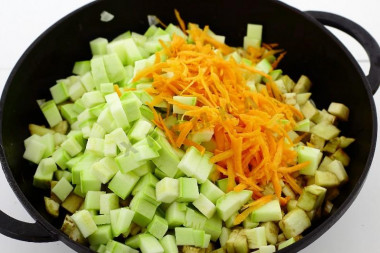
Then add the grated carrots. Add a little salt to let the vegetables juice. Mix well. Cover with a lid, simmer for 40-50 minutes until all the ingredients are ready, over low heat. Stir occasionally.
Step 6:
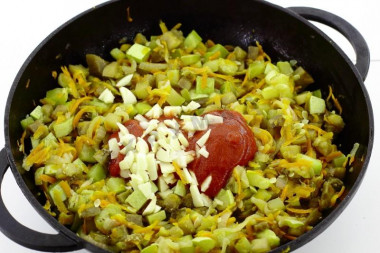
When the vegetables have become soft, add chopped garlic and tomato paste. Mix well. Simmer for another 10-15 minutes. Season with salt, ground black pepper, ground coriander, dried parsley.
Step 7:
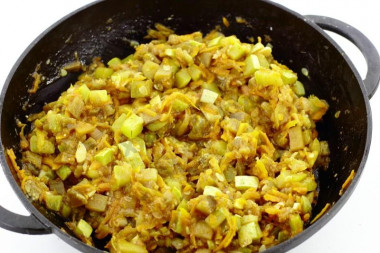
Zucchini eggplant caviar is ready. It can be used in this form.
Step 8:
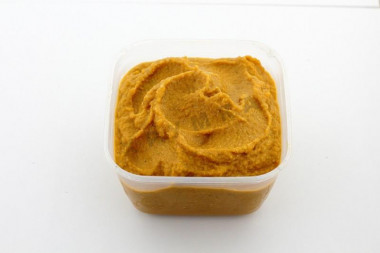
Or grind in a blender. At this stage, vinegar should be added to the zucchini-eggplant caviar and transferred to sterilized jars, rolled up for the winter. The recipe is indicated with a calculation of about 750ml-1 liter jar
Step 9:
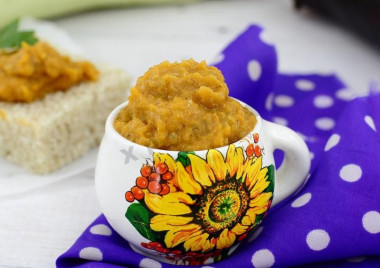
Bon appetit!
A little advice: it is better to roll this caviar in small jars for the winter, no more than 0.5 liters. Because after opening the jar, it is best to eat caviar quickly, it can deteriorate quite quickly (especially if someone at home forgot it overnight on the kitchen table).
How to calculate the number of cans, why banks explode and how to avoid it, as well as secrets and life hacks, read the article about preparations for the winter.
How to remove the bitterness from eggplant? Cut the eggplant into plates, circles or cubes, add salt, leave for about 10 minutes until the juice is released. Drain the resulting liquid, rinse the eggplants and start cooking.
Any oils are useful only until a certain temperature is reached - the point of smoking, at which the oil begins to burn and toxic substances, including carcinogens, are formed in it. How to determine the roasting temperature and choose the best oil for frying, and which one is better not to use at all, read here .
Caloric content of the products possible in the composition of the dish
- Zucchini - 23 kcal/100g
- Carrots - 33 kcal/100g
- Dried carrots - 275 kcal/100g
- Boiled carrots - 25 kcal/100g
- Eggplant - 24 kcal/100g
- Garlic - 143 kcal/100g
- Ground black pepper - 255 kcal/100g
- Parsley greens - 45 kcal/100g
- Tomato paste - 28 kcal/100g
- Salt - 0 kcal/100g
- Onion - 41 kcal/100g
- Sunflower oil - 898 kcal/100g
- Refined sunflower oil - 899 kcal/100g
- Table vinegar - 11 kcal/100g
- Ground coriander - 25 kcal/100g

